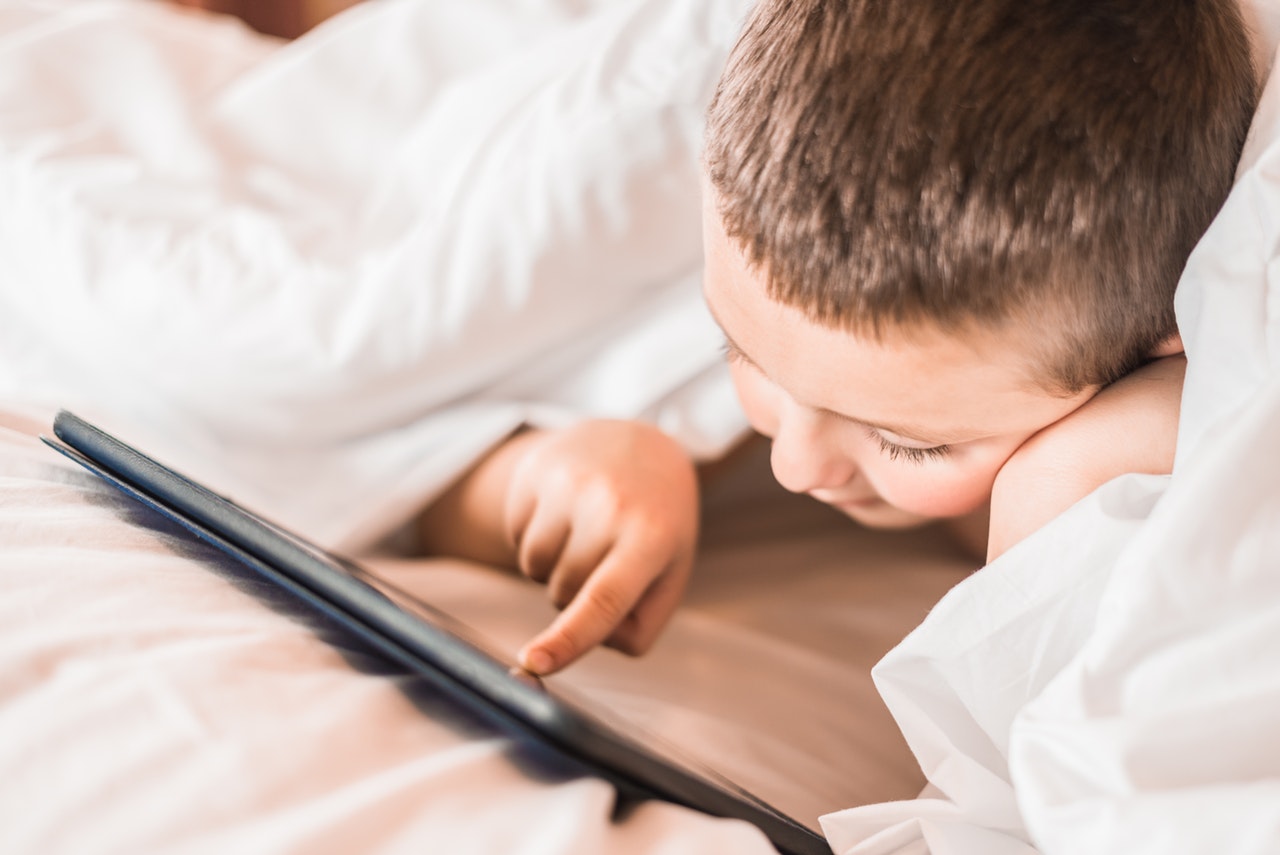Highlights
- There’s one area where it remains both practically feasible and morally urgent to persist in this fight, and that is family life. Post This
- When you grasp that this struggle [over screens) is viable inside your home, and then take it up in earnest, you make a strange discovery: it's not just edifying; it's galvanizing. Post This
- Whether to get your little kid an iPad, or get your middle-schooler an iPhone, or let your high schooler be an Instragrammer or sleep with her phone under her pillow, might seem like it’s technology’s question to answer...but it isn’t. Post This
I suppose it’s natural for people, and parents especially, to express their unease about digital technology and its domination of our lives in the terms of public health—especially mental health. To say that smartphones have become ubiquitous since their introduction in 2007 is to commit a laughable understatement. They have become hegemonic, on scales both grand and intimate. Our common life in its very functioning has come to presuppose that we wear them on our bodies prosthetically. Most of our social interactions are now mediated and enabled by computer software. And when it comes to our mental health over those years, we don’t seem to be doing so hot, especially young people, those who are still young enough to be considered children but old enough to own smartphones and have accounts on social media. Parents would seem to have reason to worry about what these things are doing to our kids.
And they do make an intuitive culprit for the measured increases in anxiety, depression, and suicide among young people. I know that the more time I spend on my phone, especially on social media, the edgier and gloomier I feel. Scrolling social media is its own little cosmos governed by a fundamental law of agitation. You get on social media to salve the agitation of not being on social media, a need instilled in you by your prior times on social media, and there you keep scrolling to salve the agitation provoked by your prior scrolling. If perpetual running inside a neuro-cognitive hamster wheel causes anxiety and depression and suicide in teenagers, the purveyors of smartphones and social media have some answering to do.
And that’s just the technological form of engagement. The content is its own fertile source of unease, which is no less agitating for working closer to the surface of human awareness, rather than at the neurological subsurface we share with hamsters. For those on political Twitter, with its dyspeptic dunking and petty status-tending, the claim that social media might be a mood-poison is almost too obvious. But there are also the other afflictions said to circulate in the social media ecosystems, the Fear of Missing Out on the ski vacations our Facebook friends and Instagram followers seem to take all the time; the insecurity from seeing obsessively curated beach pictures of ripped abs, in both six-pack and eight-pack assortments, and bikini bodies teasingly suggestive of anorexia.
But as mentally disturbing as the social media experience often feels, and as corrosive as it may be for impressionable young people, the causal connections between smartphone and social media use and degraded mental health in teenagers are ambiguous and strongly contested. Don’t get me wrong. When Jean Twenge and Jonathan Haidt argue that the timing of worldwide increases in teenage loneliness corresponds to design changes that made social media platforms more addictive, I am eager to believe. The empirical case Twenge and Haidt make corresponds with my own suspicion, and the tendency to denounce such critiques as “moral panic” strikes me as vaguely hysterical in its own right. It signals a brittle need to believe historical change is cool, whatever it brings. But when the scientific quibbling starts about just how much of the increased loneliness can really be attributed to digital technology—which is necessary, scientifically—I get impatient. As I see it, a powerful case against smartphones and social media for young people has already been made, and this case has the same practical upshot for parents as Twenge and Haidt’s claims about loneliness and depression.
This case is made, naively as it were, in the process of summoning our intuitions about these technologies in the first place, in describing our experiences with them and simply naming the status they have attained in our lives. Note the language I default to above, in which I refer to human, commercial creations we find “dominating” us, “hegemonic” on both the larger scale of aggregate social life and the “intimate” scale of our inner selves, the deep constitution of our motivations and impulses and habits, which these creations have in material ways overridden and reprogrammed. Like the unremovable bracelet a parolee wears around his ankle, we wear, “prosthetically,” consumer products that surveil our movements and scan and store our thoughts and sometimes feed the intelligence they gather to, well, the police. They induce or wheedle or beguile us into entering designed feedback loops of subconscious striving plausibly analogized to a “hamster wheel,” mental and physical exertions that amount to a sort of uncompensated labor we do for corporations that vacuum up our agitations as data about us, which they sell to each other.
Whether to get your little kid an iPad, or get your middle-schooler an iPhone, or let your high schooler be an Instragrammer or sleep with her phone under her pillow, might seem like it’s technology’s question to answer...but it isn’t.
To the extent that we care about our own freedom and flourishing as human beings, we are in conflict with the sublimely powerful forces of digital technology, which are indifferent to those things in essence, subversive of them in design, and (probably, pending the judgment of Science) destructive of them in effect.
But we resist putting our relationship with technology in these stark and warlike terms because what’s the use? What weapons do we have to take up this fight? And there’s enough diversion and convenience to go along with the existential insult to make any quixotic skirmishing, done loudly enough, simply annoying. The main bargains have been made. We don’t want any trouble. It was back in 2000 that we deputized Kent Brockman to welcome our digital overlords. Our limbic systems signed binding terms of surrender with them in 2007 when the iPhone came out.
But there’s one area where it remains both practically feasible and morally urgent to persist in this fight, and that is family life. The outside world has fully conformed itself to the needs of the digital system, even schools, where computerized learning is both known to be a sham and avidly adopted. But, for parents, inside the home it’s different. Whether to get your little kid an iPad, or get your middle-schooler an iPhone, or let your high schooler be an Instragrammer or sleep with her phone under her pillow, might seem like it’s technology’s question to answer. It might seem like another bland dictate from the governing power you have to go along with, but it isn’t. You don’t. You can answer that question yourself.
And grasping that you have this power, you might find the reasons for exercising it more persuasive. You don’t have to wait for Science’s final dredging of the statistics on whether social media is the true cause of the unhealthy outcomes. That people have designed the popular social media apps to circumvent your children’s human intelligence and induce repetitive rodent behavior in them to make money for themselves is bad enough. You don’t need to wait for Science to tell you this causes depression in them. It should cause depression in you.
When you grasp that this struggle is viable inside your home, and then take it up in earnest, you make a strange discovery: it's not just edifying; it's galvanizing. My wife and I faced recurrent arguments from our oldest child, as she moved through middle school, that she needed a phone. Between sixth and eighth grade, she went from being one of the few kids in her grade who didn’t have a phone to being, she claimed, the only one. But we had years earlier decided she wouldn’t get a phone until after middle school, and as we held our ground against her intermittent lobbying and the broader expectation that we would submit, we realized we were enjoying the struggle. It felt good to stand together as a couple against this supposed fait accompli, this decision that smartphones and social media had supposedly made on our behalf about the role and scope they would have in our lives, and say, “Not here. Not yet. Not us.”
Matt Feeney is a writer and the author of “Little Platoons: A defense of family in a competitive age” (Basic Books: March 2021).
Editor’s Note: The opinions expressed in this article are those of the author and do not necessarily reflect the official policy or views of the Institute for Family Studies













